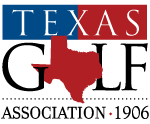Around the Green
The latest golf-related news, notes, and feature stories from the TGA.
UNDERSTANDING COURSE SLOPE RATING
Perhaps no golf course terminology is more misunderstood than “Slope.” Most golfers believe that the higher the Slope number, the more difficult the golf course. The Slope is actually not a measure of a course's difficulty. That's the responsibility of the Rating figure. The Slope is a measure of how much difference a course's difficulty is for the average bogey golfer compared to the scratch golfer.
Most golfers know that there is a Course Rating for each set of tees based on a scratch golfer’s game. A “scratch golfer” is defined as a player who can play to a Course Handicap of zero on any and all rated golf courses. What most don’t know, however, is that there is also a Bogey Rating established for each set of tees based on the golfer who has a Course Handicap of approximately 20 on a course of standard difficulty. The difference between these two ratings is the major determining factor in the Slope Rating.
The Texas Golf Association is charged with rating the golf courses in Texas. These rating teams are often asked before they can even finish up their calculations: “What do you think this course will Slope at?” No answer can be given because there is no way to predict such a thing. But why the strong interest in the Slope Rating and not the actual Course Rating? Again, it’s the misconception that the “Slope” is the main indication of how difficult a golf course is.
In many cases, there be such a sizeable variance between the Course Rating and Slope Rating. Why? There are several reasons, but the short answer is that the standard yardages used in the rating procedure are significantly different for the scratch golfer than they are for the bogey golfer. That means things such as water hazards, trees, and bunkers might be a strong factor for the scratch player and not for the bogey player, and vice-versa.
“A lot of golfers want to try and draw a meaningful conclusion about a course’s difficulty by comparing Slope Ratings from one course to another,” said Kelly Kilgo, Senior Director of Membership Services & Course Rating for the TGA. “This may or may not be true depending on the level of golfer you are, but it is mainly the Course Rating, not the Slope Rating, which is the more dominant factor defining course difficulty.”
Simply put, the Slope Rating is the evaluation of the relative difficulty of a course for a non-scratch golfer compared to a scratch player. The Slope Rating is used to convert a player’s USGA Handicap Index to a course handicap. This is how the USGA Handicap System adjusts a player’s Course Handicap for each set of tees on each course according to that relative difficulty of a course. A course with a Course Rating of 73.0 will always be more difficult for a scratch golfer than a course with a Course Rating of 70.0. Slope tells how “proportionately” more difficult a course is for higher handicap golfers.
Maybe this will help clear up some of the misconceptions about Slope Ratings and how they factor in to the Handicap System, not necessarily in the difficulty of the golf course.
For questions regarding a course’s Slope Rating, please contact Kelly Kilgo by phone at (214) 468-8942 or by email at [email protected].



